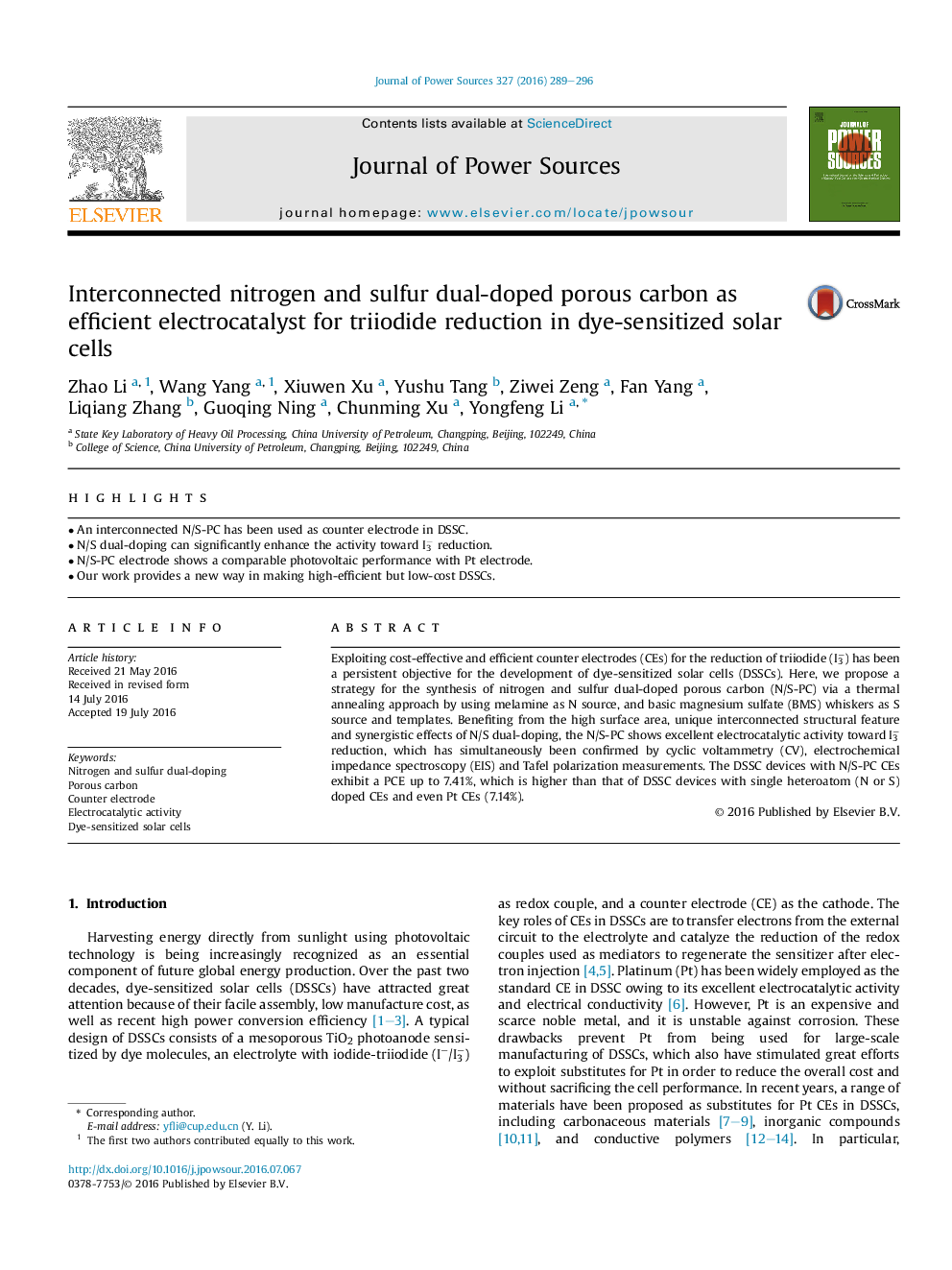| Article ID | Journal | Published Year | Pages | File Type |
|---|---|---|---|---|
| 7727469 | Journal of Power Sources | 2016 | 8 Pages |
Abstract
Exploiting cost-effective and efficient counter electrodes (CEs) for the reduction of triiodide (I3â) has been a persistent objective for the development of dye-sensitized solar cells (DSSCs). Here, we propose a strategy for the synthesis of nitrogen and sulfur dual-doped porous carbon (N/S-PC) via a thermal annealing approach by using melamine as N source, and basic magnesium sulfate (BMS) whiskers as S source and templates. Benefiting from the high surface area, unique interconnected structural feature and synergistic effects of N/S dual-doping, the N/S-PC shows excellent electrocatalytic activity toward I3â reduction, which has simultaneously been confirmed by cyclic voltammetry (CV), electrochemical impedance spectroscopy (EIS) and Tafel polarization measurements. The DSSC devices with N/S-PC CEs exhibit a PCE up to 7.41%, which is higher than that of DSSC devices with single heteroatom (N or S) doped CEs and even Pt CEs (7.14%).
Related Topics
Physical Sciences and Engineering
Chemistry
Electrochemistry
Authors
Zhao Li, Wang Yang, Xiuwen Xu, Yushu Tang, Ziwei Zeng, Fan Yang, Liqiang Zhang, Guoqing Ning, Chunming Xu, Yongfeng Li,
